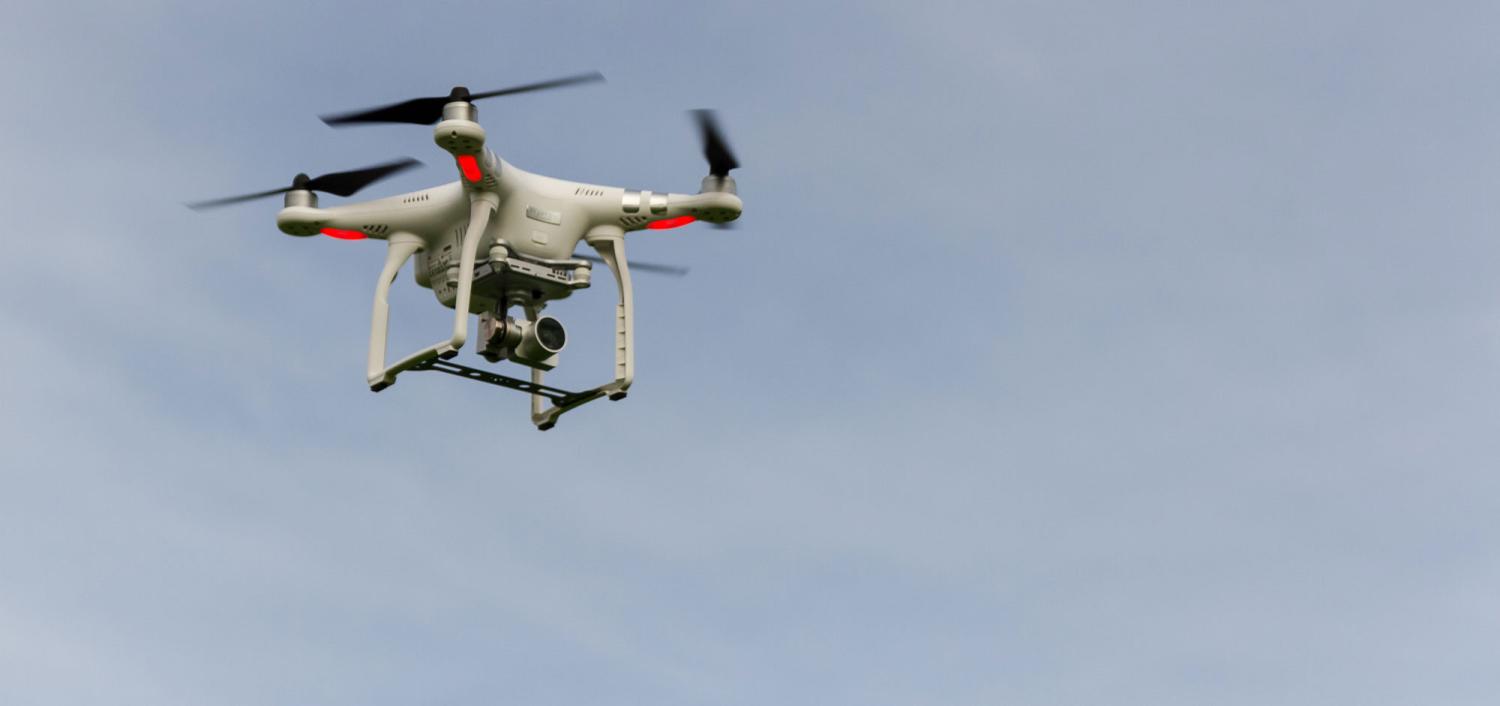In irregular wars, the state has traditionally had a monopoly on the use of air power. This has now been overturned. With the rise of small, low-cost, commercial-off-the-shelf drones, armed non-state actors are now also able to employ air power. Today, the leading armed non-state group operating such hobbyist drones is the Islamic State of Iraq and Syria (ISIS) but others are following close behind. Air power has now been privatised.
ISIS interest in drones goes back to 2013 (before the group officially formed). It gradually acquired various rotary and fixed-wing hobbyist drones and, trialling to determine the most useful, formed a drone unit. Today the most common type of ISIS drones are of Chinese origin, in particular the DJI Phantom quadcopter drones, but the fixed wing X-UAV Talon and Skywalker X8 FPV types are also common. The source is unsurprising given that Chinese firms dominate the hobbyist drone market.
The first definite indication of ISIS using such drones was a YouTube video that appeared in August 2014 showing footage taken from an ISIS quadcopter flying a reconnaissance mission over a Syrian Air Base near Raqqah. The mission detected several entry paths that were later used by ISIS ground forces to capture the base. Later, during the siege of Kobane, quadcopters located artillery and mortar targets and corrected their fall of shot. The quadcopters also undertook dedicated information operation missions to provide high quality footage for propaganda videos. More recently, ISIS has made extensive use of hobbyist drones in the battle for Mosul, especially when defending inner-city areas.
ISIS combined-arms tactics often incorporate suicide bombers ramming an explosive-laden car or truck into a carefully selected target, such as an important building or a defended checkpoint. When this was countered in Mosul’s urban areas by blockading the main streets with rubble or wrecked vehicles, ISIS responded by integrating drones into the suicide car-bomb attacks. The drones provided real-time reconnaissance video that was used to guide the car bombs through narrow side streets, avoiding defensive roadblocks to reach their designated targets. The high-definition video imagery of the attack taken by the quadcopter was then quickly uploaded to the internet for propaganda purposes.
In the Mosul battle, ISIS also used drones modified to carry and drop small munitions including grenades and 40mm mortar shells. Attacks by these weaponised quadcopters began in early November 2016 and steadily escalated. In a few months there were up to 70 drones airborne in a 24-hour period, including 12 armed drones simultaneously. The drones targeted Iraqi Security Forces (ISF) units together with humanitarian aid distribution centres in an attempt to disrupt ISF stabilisation efforts. This video gives a graphic picture of how such attacks were made.
While each attack caused only limited damage, the continual harassment by the ‘killer bees’ damaged friendly-force morale, slowing the city’s recapture. US Special Operations Commander General ‘Tony’ Thomas noted that, in the battle for Mosul, the most daunting problem was [that ISIS]…for a time, enjoyed tactical superiority in the airspace under our conventional air superiority in the form of commercially available drones...and our only available response was small arms fire.'
ISIS’s success suggests future insurgencies will also feature hobbyist drones in similar roles and potentially new ones. In that regard, the Mosul battle takes on added importance.
With large-scale population shifts globally from rural areas into cities, many armies now expect that future wars will be urban in nature. In that regard, an Army Lieutenant Colonel analysing the Mosul battle declared that armed airborne Intelligence, Surveillance and Reconnaissance (ISR) is now 'the king of the urban battlefield…an Army without organic airborne armed ISR will be at a severe disadvantage on a contemporary urban battlefield.'
The Lieutenant Colonel was clearly thinking of the USAF’s Reaper armed unmanned aircraft vehicles supporting ISF. However, many of the attributes of these larger aircraft are shared with the ISIS hobbyist drones, albeit to a lesser degree. Such attributes include: persistent stare from above; target identification capability; and ability to coordinate with artillery to accurately guide indirect fire and, if required, attack with a low collateral weapon. ISIS today effectively has its own organic 'king of the urban battlefield' (unlike the ADF, although there is intent).
Western forces engaging ISIS forces or future ISIS-like insurgents might be less technologically superior than commonly thought. General Thomas’s quote is worth re-stating: '(ISIS)…for a time, enjoyed tactical superiority in the airspace.'
The low cost of hobbyist drones and their ready availability means that at any time, an insurgency may use drones to gain a tactical advantage. Western forces involved in counter-insurgency operations will need to deploy appropriate systems to counter the hobbyist drone threat. Such defence is technically straightforward but the systems now available are short range and large numbers would be needed to cover a normal operational area. Moreover, as drones become more autonomous, there are worries about swarm attacks that overwhelm defensive systems.
Air power has traditionally been wielded by large, well-financed government organisations composed of numerous highly skilled people. Hobbyist drones overturn this model. Such drones are affordable by many and can be flown and operated by most. These drones disperse air power well beyond the confines of the long-established entities that have employed it across the first century of powered flight. Hobbyist drones have now moved air power away from government ownership and control, and passed it to the people.

